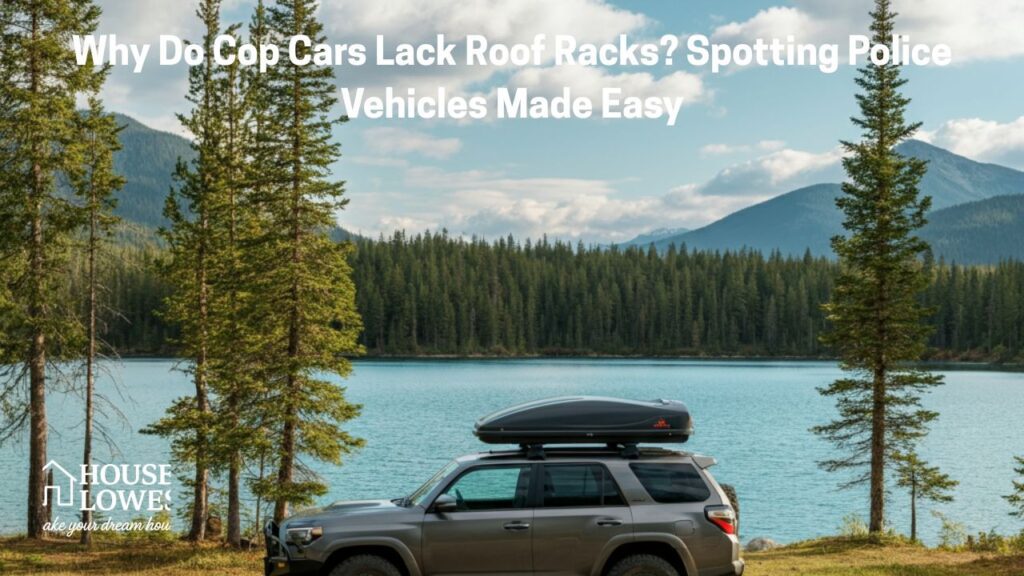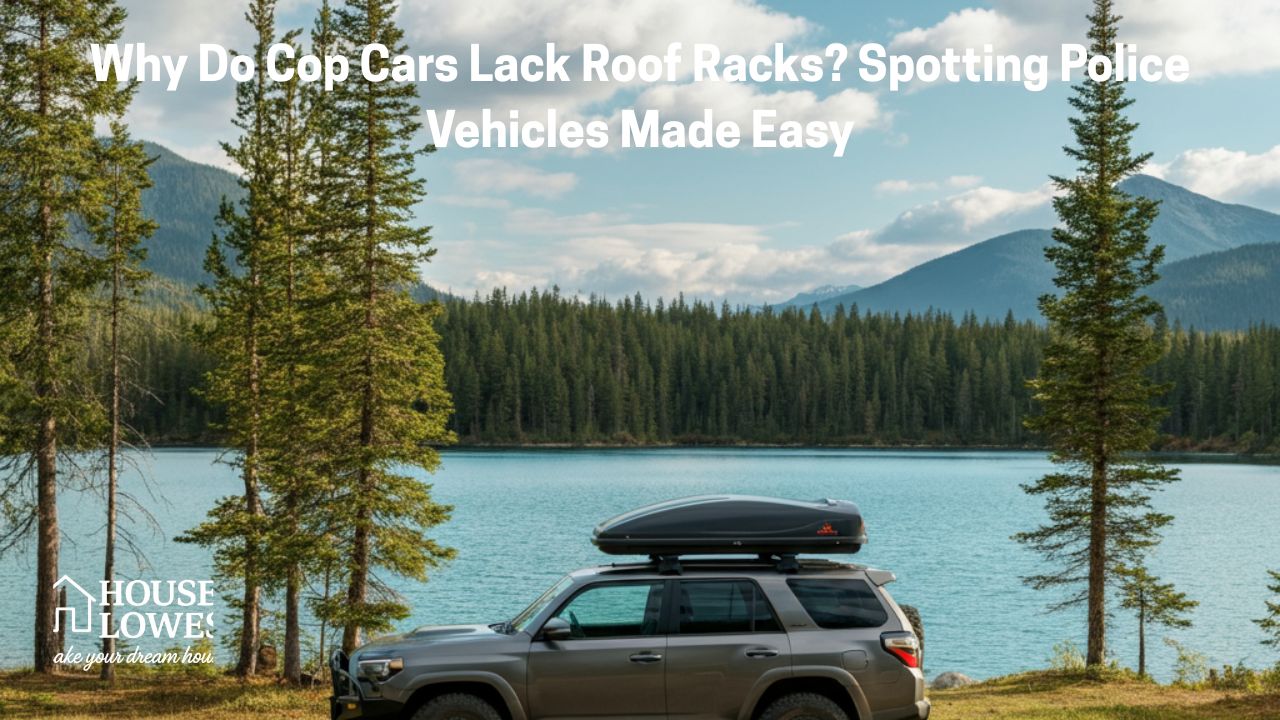Alright, buckle up! Have you ever spotted a car on the road, squinted at it, and thought, “Wait… is that a cop?” It’s not just you; we’ve all played this roadside guessing game. One of the dead giveaways people look for is the absence of roof racks on cop cars. But what’s the deal with that? And why do police cars look so different from the vehicles we drive? Don’t worry, I’ve got all the answers right here.

The Purpose Behind Police Car Designs
Police cars aren’t just regular cars with a fancy paint job and flashing lights. They’re tools, custom-built to help officers carry out their duties effectively. From chasing down speeding cars to keeping neighborhoods safe at night, these vehicles need to be both practical and stealthy.
See, a roof rack isn’t just a piece of decoration. On civilian cars, roof racks serve a functional purpose. You might use one to haul luggage, bicycles, or even a kayak if you’re feeling adventurous. But for a cop car, a roof rack could stick out like a sore thumb. Imagine an undercover vehicle with a bulky rack on top; it would blow its cover instantly! That’s why most cop cars skip them altogether.
Key Features That Make Police Cars Unique
Aside from the whole roof rack debate, there are other differences between police and civilian cars. For example, police vehicles often have tough steel wheels instead of the alloy ones on regular cars (goodbye, scratches and dents!). Plus, they ditch things like chrome accents to avoid unnecessary glint and shine that could catch someone’s eye when they’re on the job.
- No Roof Racks: Staying stealthy and incognito.
- Steel Wheels: Built to withstand wear and tear.
- Minimal Chrome: Reducing reflections to stay undercover.
Why Roof Racks Are a No-Go for Cops
Now, you might be wondering, “What’s so wrong with a roof rack? Couldn’t it just make the car look normal?” While that logic makes sense, the real reason cops avoid roof racks is all about functionality and safety.
Imagine a high-speed chase (you’ve seen those in action movies, right?). A bulky roof rack could add weight, affect the car’s balance, or even limit the aerodynamics. Police cars are meant to go fast and be maneuverable in tight situations, so every little detail matters.
Plus, in terms of visibility, a roof rack can block emergency lights mounted on top of the car. The flashing red and blue lights need to be seen clearly during pursuits or when pulling someone over. Having anything in the way, like bike racks or extra luggage carriers, could hinder that.
The Role of Stealth in Police Vehicles
It’s not just about what’s on the car; it’s also about what’s not there. Think about undercover cop cars. They often mimic everyday vehicles to blend in with traffic. If you saw a car with bright decals, lights on top, and a screaming siren, you’d know it’s a cop. But an unmarked car? Harder to tell. Removing roof racks is one way to make it less obvious.
Fun Fact!
Undercover vehicles like Ford Explorers are super common for police departments. But here’s the trick: the ones used by cops don’t have roof rails, unlike the civilian versions. Ford even customizes these SUVs specifically for law enforcement use. Take a guess when you’re on the road next time. Is it a family-filled Ford Explorer or a sneaky police car?
Global Differences in Police Car Design
“But wait,” you say, “do all police cars look the same around the world?” Great question! Police cars differ from country to country, and in some places, roof racks might actually be used. For example:
- United Kingdom: Police cars often carry bulky equipment, so roof racks are sometimes necessary.
- Japan: Their police vehicles often sport visible roof racks for specific tools.
The goal of police car design often boils down to regional needs. Some places might emphasize visibility for public trust, while others prioritize stealth for undercover work.
Safety First!
Another reason police cars avoid roof racks is that they need to be as safe as possible in dangerous situations. Picture a cop responding to an emergency call or parking under low roofs in a narrow alleyway. A roof rack could easily get in the way or get damaged.
And if you think protecting passengers inside the car is important (spoiler alert, it is!), many law enforcement vehicles are equipped with roof reinforcements. Ever seen a cop police siren mounted on a car roof? That’s thanks to special reinforcement under the roof structure, which wouldn’t work well with a regular roof rack hogging space.
Real-Life Example
Back in the day, cars like the 1977 Plymouth police car featured roof reinforcements for their iconic roof lights. These design improvements prioritizing safety have carried over to modern times.
FAQs Section
Here’s where I answer the questions you didn’t know you had (but now you’re curious about).
Do police cars never have roof racks at all?
Nope, sometimes they do! While it’s rare, marked SUVs or specialized law enforcement vehicles designed to carry extra equipment may sport roof racks. For standard patrol or undercover vehicles, though? Generally not.
Are police lights always mounted on the roof?
Not always. Some police cars have sleek, low-profile lights mounted inside the windshield or on grills for undercover work.
Why do undercover police use Ford Explorers so much?
Explorers are roomy, reliable, and easily customized for law enforcement needs. Plus, their civilian version is super common, so they don’t stand out. But watch for subtle signs (like no roof rails!) to spot one on the road.
Could roof racks make a comeback in cop car designs?
Maybe! Vehicle designs evolve rapidly, especially with new tech like electric and autonomous cars on the horizon. Who knows? Roof racks may find a niche use in the future for added versatility.
Why are retired cop cars so popular with regular drivers?
Because they’re built tough! Retired cop cars are often sold to civilians after being decommissioned. They’re durable, affordable, and come with unique features, minus the emergency lights and sirens of course.
Key Takeaways
- Most police cars don’t have roof racks, especially undercover ones, to maintain a low profile.
- Roof racks can interfere with safety, functionality, and visibility in high-pressure situations.
- Globally, police car designs vary; some countries incorporate roof racks based on need.
- Police cars like Ford Explorers are custom-made to blend in while staying effective.
Next time you’re driving and a car seems “too normal” but there’s no roof rack in sight, pay closer attention. You might just have spotted an undercover cop. Trust me, you’re going to find yourself inspecting every Ford Explorer or plain-looking SUV on the road now. Don’t say I didn’t warn you!
Stay tuned for the next section, where we’ll explore more sneaky clues about spotting police vehicles. Spoiler alert: it’s not just about the roof!
Admin Recommendation
Roofing Cop Explained | Discover Top Roofing Solutions & Tips
Comprehensive Guide to Standing Seam Metal Roofing | Benefits & Costs







